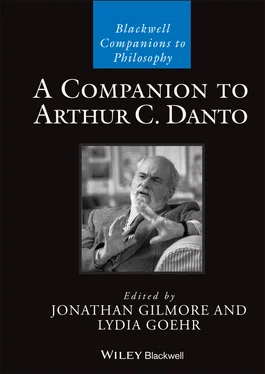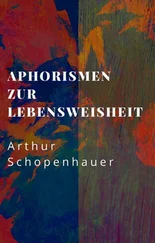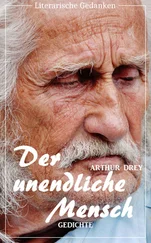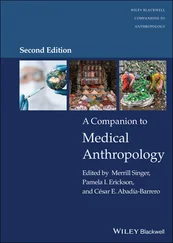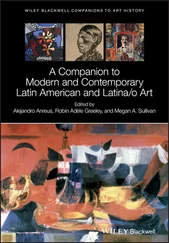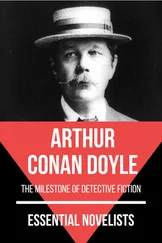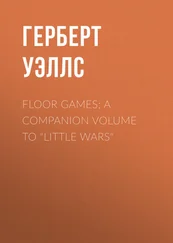A Companion to Arthur C. Danto
Здесь есть возможность читать онлайн «A Companion to Arthur C. Danto» — ознакомительный отрывок электронной книги совершенно бесплатно, а после прочтения отрывка купить полную версию. В некоторых случаях можно слушать аудио, скачать через торрент в формате fb2 и присутствует краткое содержание. Жанр: unrecognised, на английском языке. Описание произведения, (предисловие) а так же отзывы посетителей доступны на портале библиотеки ЛибКат.
- Название:A Companion to Arthur C. Danto
- Автор:
- Жанр:
- Год:неизвестен
- ISBN:нет данных
- Рейтинг книги:5 / 5. Голосов: 1
-
Избранное:Добавить в избранное
- Отзывы:
-
Ваша оценка:
- 100
- 1
- 2
- 3
- 4
- 5
A Companion to Arthur C. Danto: краткое содержание, описание и аннотация
Предлагаем к чтению аннотацию, описание, краткое содержание или предисловие (зависит от того, что написал сам автор книги «A Companion to Arthur C. Danto»). Если вы не нашли необходимую информацию о книге — напишите в комментариях, мы постараемся отыскать её.
Companion
A Companion to Arthur C. Danto
A Companion to Arthur C. Danto — читать онлайн ознакомительный отрывок
Ниже представлен текст книги, разбитый по страницам. Система сохранения места последней прочитанной страницы, позволяет с удобством читать онлайн бесплатно книгу «A Companion to Arthur C. Danto», без необходимости каждый раз заново искать на чём Вы остановились. Поставьте закладку, и сможете в любой момент перейти на страницу, на которой закончили чтение.
Интервал:
Закладка:
It has been argued that factors not perceptible in the unplugging action (such as who owns the life support machine, who has the rights to control the machine, etc.) could make the physically identical act (and consequences) of pulling the plug into either a killing or instead a letting die. For example, if a doctor exercising legitimate control over the machine attaches someone to it and then while still retaining legitimate control over its use unplugs the person, he could be letting the man die in withdrawing life support as much as he would be letting him die if he did not start the life support machine to begin with. By contrast, if the nephew pulls the plug on the machine, assuming that he has no right to decide whether to let others use it, he will have interfered with a machine he has no right to control, and this results in someone’s death. This may make what he does a killing. The view that factors not perceptible in an act can determine whether the act is a killing or a letting die is analogous to Danto’s view that something not perceptible in a physical object can determine whether something is art.
B. Note that some other factors imperceptible in an act may not be relevant to whether the doctor and the nephew kill or let die. For example, if the doctor is greedy and intends the patient’s death for his own interests and against the patient’s interests, this needn’t mean that he kills rather than lets die. It may only mean that he impermissibly lets die. If the nephew is not greedy but correctly thinks his uncle would be better off dead and acts for his sake, this needn’t mean that he lets die rather than kills, though it might make his killing permissible. One implication of this is that conceptual issues in ethics can be distinguished from judgments about permissibility and impermissibility; it is a mistake to determine that pulling the plug is a killing merely because it is impermissible or that it cannot be a killing merely because it is permissible. Similarly, the merit of an artwork is not relevant to deciding if it is an artwork. For example, item (5) in Danto’s list may be an artwork and yet be a very bad or meritless one.
The most famous thought experiments in ethics are not concerned with determining into which conceptual category an act falls, but with whether an act is permissible and why. For example, many variations on one basic Trolley Problem Case are thought experiments about whether and why what is assumed to be a killing (turning the trolley from killing five people to killing one other person) is permissible when one could instead do what is assumed to be a letting die (as when a bystander does not turn the trolley away from hitting five people thereby letting them die so as not to kill one other person). In philosophy of art, a comparable question is whether what had been determined to be an artwork is at least minimally good, comparable to “permissible” in morality. A second question is what makes or explains why the minimally good work of art is good. Other thought experiments in ethics are concerned with whether an act of one type is morally equivalent to or morally different from an act of another type and why. A famous example is whether killing is per se morally worse than letting die per se. The comparable questions in philosophy of art might be whether one type of artwork (e.g., still life) has less merit per se than another type (e.g., landscape) and why.
None of Danto’s thought experiments that I have described is concerned with these comparable questions about the merit of works of art. Hence, use of thought experiments in ethics is often unlike the use of thought experiments in Danto’s work. One question is whether thought experiments could be used in art analogous to the way they are used in ethics to deal with (im)permissibility or moral (in)equivalence and the reasons for it. Another question is how the use of these thought experiments in ethics bears on the issue raised by Wollheim of what a particular case can tell us about a general claim. Let us consider the second question first.
To determine if killing in itself (per se) is worse than letting die per se, the philosopher James Rachels asks us to imagine two different cases in which all factors are held constant except that one is a killing and the other a letting die. In the letting die case, someone sees a child drowning in a bathtub and does not rescue him because he intends the child’s death in order to inherit his money. In the killing case, someone holds a child in a bathtub under the water, drowning him, because he intends the child’s death in order to inherit his money. 3Rachels thinks that the killing case is not morally worse than the letting die case, and from this he concludes that killing is not per se morally worse than letting die per se.
Much has struck philosophers as problematic about Rachels’ discussion. I shall discuss only one point that will inform my discussion of the Danto/Wollheim debate. If it were true that a particular case of killing is morally equivalent to a particular case of letting die (and it is not clear this is so in Rachels’ cases), one could not conclude from this that killing per se is never morally different from letting die. The claim that (a) there is a per se moral difference between killing and letting die is not the same as the claim that (b) in every case killing will make some moral difference that letting die does not. One could show that (b) is not true by a set of particular cases without undermining the per se moral difference claim in (a). One set of cases in which a killing and a letting die differ morally when all other factors are held constant could defeat the claim that killing and letting die are per se morally equivalent, but one cannot establish a universal claim of per se equivalence on the basis of one set of cases in which a killing and a letting die do not differ morally when all other factors are held constant. There might be a per se moral difference that does not show up sometimes because even if the cases are equalized for all factors besides the ones whose moral significance we are testing, the particular equalized factors in the case might “silence” or override a per se moral difference between the factors we are testing. For example, if someone has competently requested that one end his life, it may not make a moral difference whether one does so by killing him or letting him die. Or if someone has been legally sentenced to death, it may not matter whether officials authorized to see that he is dead do so by letting him die or by killing him. But these cases where a killing and a letting die are morally equivalent do not show that per se one type of act has no factors that make it morally different from the other that would account for moral differences in other sets of equalized cases.
This claim that the moral character of different acts could differ per se, while some cases involving the different acts are morally equivalent, brings to mind (for different reasons) Wollheim’s remarks on Danto’s gallery of indiscernibles. The fact that in some cases it is impossible to distinguish an artwork perceptually from a non-artwork does not show that there is no per se (conceptual) difference based on perceptual properties between an artwork and a non-artwork. Given what I said about killing and letting die, it might be suggested that there is some factor in some cases that is overriding or “silencing” the role of certain factors that still make a per se difference between art and non-art. 4
In (B) I considered whether there is a moral difference in permissibility or in seriousness of a moral wrong. The most direct comparison with art bears on evaluation, whether some works of art are at least minimally good or why one is worse (or better) than another. Could, then, thought experiments be used in art as they are used to deal with (im)permissibility or moral (in)equivalence? It seems unlikely that the method of thought experiments I have described will work with art because in morality there are thought to be factors that weigh in the direction of permissibility or impermissibility or, other things equal, make an act morally worse than another. This is one reason why thought experiments can be good predictors of how one should deal with real-life cases. But there do not seem to be comparable factors that at least weigh in the direction of one artwork being good or better than another. That we admire the blue in one good artwork does not mean that the same blue in another artwork will weigh in favor of its being good. Perhaps properties at a very high level of generality, such as effective composition or dynamism, could lead us to think that an artwork would be better than another. Even this seems unlikely. The goodness of an artwork does not seem to be predictable from a list of its qualities in the way the permissibility of an act is. But perhaps this is only true when non-artists consider these qualities (even at a high level of generality). Is it possible that (as some have thought) an artist can know that once instantiated in the real world the artwork she has in mind as good will be good?
Читать дальшеИнтервал:
Закладка:
Похожие книги на «A Companion to Arthur C. Danto»
Представляем Вашему вниманию похожие книги на «A Companion to Arthur C. Danto» списком для выбора. Мы отобрали схожую по названию и смыслу литературу в надежде предоставить читателям больше вариантов отыскать новые, интересные, ещё непрочитанные произведения.
Обсуждение, отзывы о книге «A Companion to Arthur C. Danto» и просто собственные мнения читателей. Оставьте ваши комментарии, напишите, что Вы думаете о произведении, его смысле или главных героях. Укажите что конкретно понравилось, а что нет, и почему Вы так считаете.
